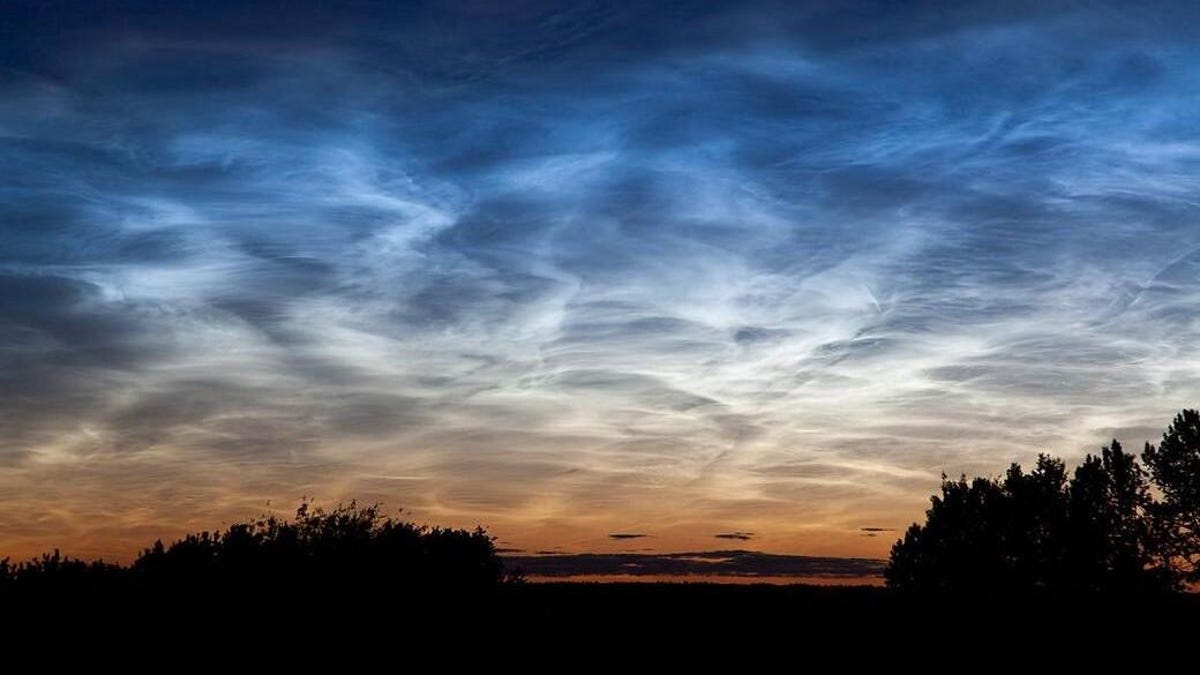These Mesmerizing Clouds Are at a 15-Year High, and SpaceX May Be the Reason

This noctilucent cloud image was taken on July 2, 2011, near Edmonton, Alberta.
What's happening
High altitude clouds have been forming in recent days at the highest rates seen since 2007.
Why it matters
Rocket exhaust may be the cause, but climate change is also known to make the clouds more visible.
Noctilucent clouds are the rarest and highest-altitude type of cloud on Earth, and recently scientists have been recording more of them than at any point in the past 15 years.
They can look a bit like an impressionist painting of waves on the ocean, but using the evening sky as a canvas and actual clouds as the paint. Noctilucent clouds form high in the sky during summer months when water molecules freeze around motes of dust in the atmosphere, creating ethereal and artistic landscapes high over the land that tend to ripple and undulate as if reflecting an unsettled sea somewhere.
Most noctilucent (the name literally means "night-shining") clouds form in the mesosphere, about 31 to 53 miles (50 to 85 km) above us where you might presume there's probably very little dust floating around for water vapor to condense and freeze around. Most of the material that causes these clouds comes from the smoke of meteors that burn up as they streak through the upper atmosphere.
Easily one of the most vivid displays of noctilucent clouds we've seen in years here at NWS Seattle. There's really nothing else quite like them. We managed to capture the Pleiades star cluster and the noctilucents in one of the photos below.
— NWS Seattle (@NWSSeattle) July 1, 2022
What a way to start July!#wawx pic.twitter.com/oarVsuPU9q
But something else may also be facilitating the recent dramatic rise of these clouds.
NASA has a spacecraft called AIM (for "aeronomy of ice in the mesosphere") that is helping to study all the fascinating things happening in the upper deck of our skies.
Cora Randall, a scientist and professor who works at the University of Colorado, Boulder, works with AIM data and was among the first to verify that NLCs are way up.
"In the last couple of days we saw a huge spike in the clouds," she told Spaceweather.com last week.
The end of June saw a spike in the frequency of noctilucent clouds that far exceeds previous spikes, going all the way back to 2007. One possible cause is the significant increase in rocket launches, led by SpaceX and others.
"We're speculating that the spike might be due to extra water vapor transported to higher latitudes from rocket launches," Randall adds.
It would take about 10 days for the water vapor that many rocket engines throw off as exhaust to float up to the mesophere, according to astronomer Tony Phillips, writing at Spaceweather.com. This means that the late June NLC spike Randall reports could be tied to a June 19 SpaceX launch that also put on a show at lower altitudes right after blasting off.
Randall cautions that much more analysis needs to be done to confirm whether SpaceX actually plays a role in creating more rare clouds.
SpaceX didn't immediately respond to a request for comment.
This animation shows the NASA AIM spacecraft's view of the start of noctilucent cloud season in the Arctic in 2020.
Research has also shown that noctilucent clouds are sensitive to climate change, and their increased visibility may also be a byproduct of our warming planet.
Your best chance for spotting them yourself is when conditions are clear, dry and summery. In the northern hemisphere, July is peak NLC season. Head outside about 30 minutes after sunset and look west for those ethereal brush strokes of ice in the sky. The higher your latitude, the better your chances to see something and for these clouds to last longer into the night.
If you get any great photos, please share them with me on Twitter @EricCMack.

